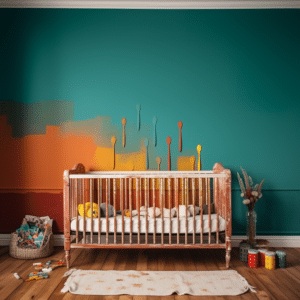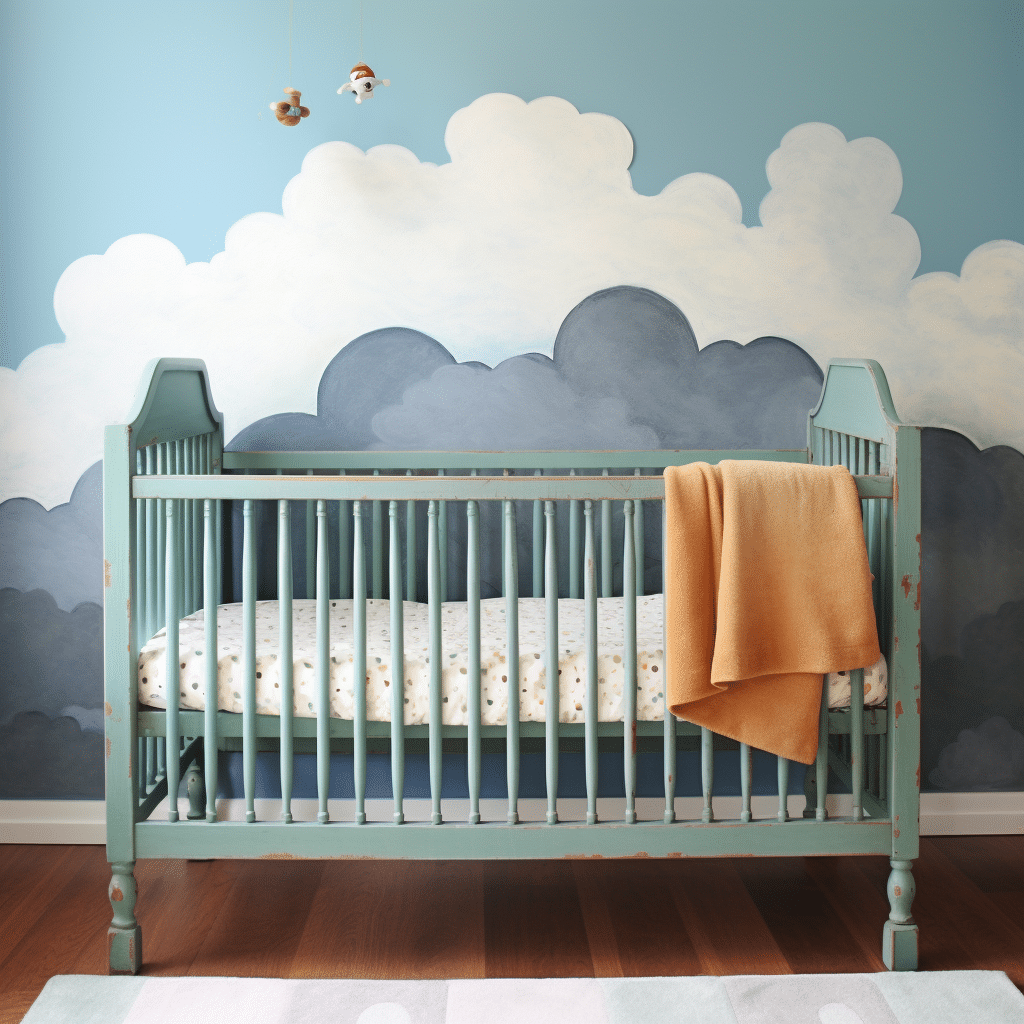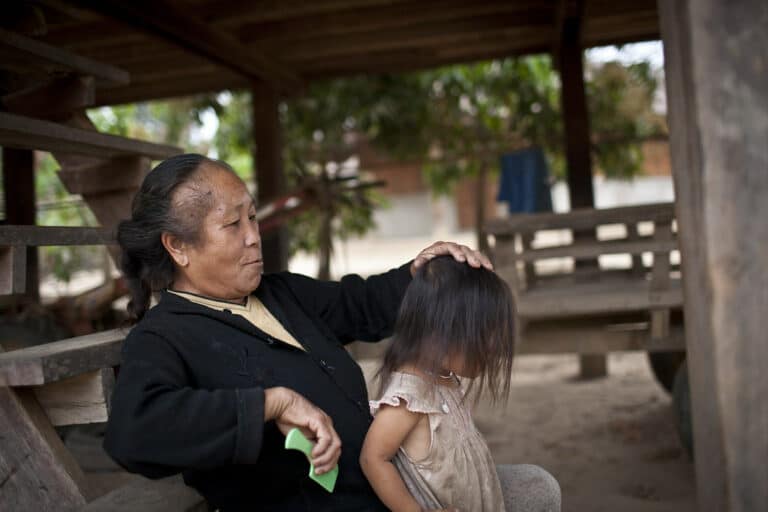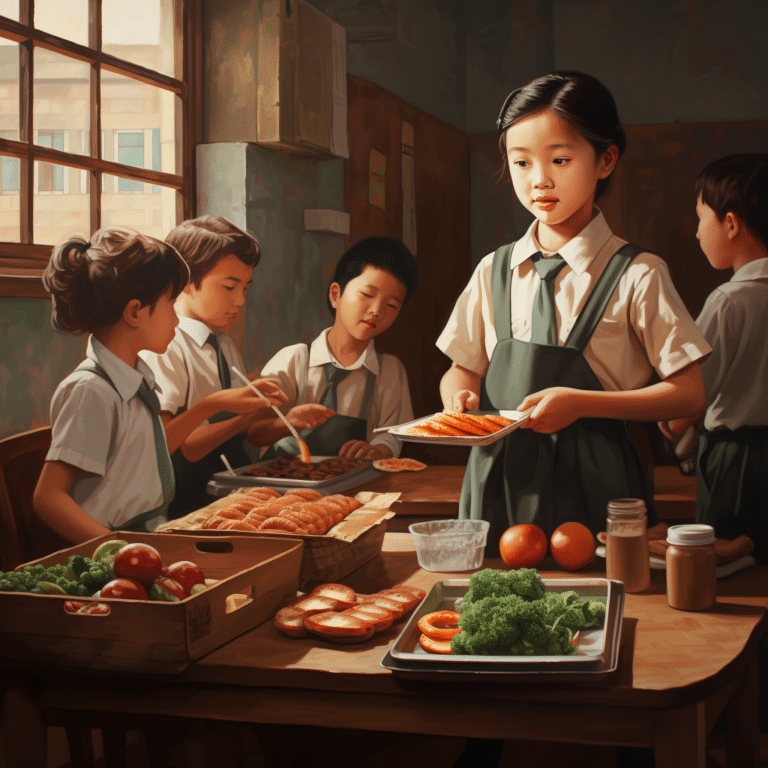Choosing Safe Paint for Baby Cribs: Essential Tips
Safe Paint for Baby Cribs: Cribs aren’t just for babies anymore. Millions of parents with toddler-aged kids use cribs as well. And if you are one of those parents who moved your baby from a crib to a “big boy” bed — or you’re about to welcome a new baby, then you need to read this article for safety reasons alone.
Nowadays, more and more companies opt for non-toxic baby-safe paints for both environmental and health-friendly cribs. But with so many companies to choose from, it can be hard to know the best. But worry not. Keep reading to learn more about baby-safe paints and how to go about their selection.

Painting Cribs
Painting cribs is easy to give your baby’s room a fresh look. It can be done by everyone, although it may seem daunting for beginners. However, with a little preparation and planning, you are on your way to getting the best results.
Before painting, you have to ensure you clean and dry the crib appropriately. Then sand down any rough edges that may be present on the front or sides of your crib with sandpaper before priming.
After priming now, the crib should be ready for painting.
What Makes Baby Safe Paint?
When choosing baby-safe paint, you will want to ensure that it goes through rigorous testing before being allowed onto the market. It needs to pass all safety regulations and must not contain any chemicals that could potentially harm your child if they get too close or touch it directly.
Some paints are made with lead which is harmful when ingested by toddlers with weak developing immune systems. So you have to be careful in your selection.
What To Consider When Choosing Baby Safe Paint for Cribs
As a parent, you want to provide the best for your child. So when choosing paint for your baby’s room, you want to ensure that it is safe and durable. And since babies are often active, you will want to ensure that the paint you choose is non-toxic and durable enough to withstand the abuse of toys and hands.
On the same note, you will want to choose a color or pattern that will grow with your child. So you will have to consider many factors when shopping for these paints. Let’s take a look at some of these factors.
Look for Low VOC Paints
Volatile organic compounds (VOCs) released from paints, varnishes, and other home improvement products are linked with respiratory problems, headaches, and fatigue. They can also cause cancer and congenital disabilities if inhaled over a long period.
So you should ensure the paint you choose has almost zero percentage of VOC compound. And identifying these paints is easy; look at labels where they have listed their ingredients.
Choose Natural Ingredients
The best way to ensure your child’s crib is safe, choose an organic, non-toxic paint. Look for natural ingredients like water, beeswax, and linseed oil paints. These ingredients are gentle on your baby’s skin and won’t cause any allergic reactions or dryness.
Other ingredients such as ammonia and formaldehyde can be harmful if they come into contact with your baby’s skin or lungs.
Consider the Finish of the Paint
Paints come in different finishes, each with its own set of benefits. The type of finish will determine how long it will last and how well it will protect the wood. All in all, it’s important to choose a paint that has been formulated with a non-toxic finish.
The paint’s finish makes it safe or unsafe for babies. The finish is a barrier between your child’s skin and any harmful chemicals in the formula. For example, some finishes contain plasticizers like phthalates (pronounced thala-tees). These plasticizers can cause health problems like weight gain and hormone disruption for babies (and adults, too!).
So if you’re purchasing ready-made paint from a store, then make sure you check out its MSDS (Material Safety Data Sheet) online or in person at the store. Before making your purchase, ensure no toxic chemicals are included in its formula.
Check if There Are Any Warning Signs on the Label
For consumers to get an idea of how safe a product may be for their babies, manufacturers have started adding warning signs on labels of products that may contain harmful substances.
These warning signs usually come in the form of symbols or words written in bold red letters on labels of such products. So be sure to check the manual.
Know What You Need
Before buying any paint, it would be best if you knew exactly what kind of painting project you have in mind. You should also know what materials you need to complete the project successfully.
This way, you can avoid spending money on tools or materials that may not be needed for your project.
Essentials When Painting Cribs
When painting a crib, you need to use the right tools for the job. Here are some of the essential tools to have on hand:
Paintbrush
You can use any paint brush, but you should choose one made specifically for painting furniture. The bristles should be soft enough not to scratch or gouge the wood but stiff enough to hold up to paint and varnish.
For lacquer, you’ll want a brush with synthetic bristles; for oil-based paints, choose one with natural bristle hairs.
Painter’s tape
Painter’s tape is an essential tool when painting cribs because it lets you mask off areas that shouldn’t be painted yet — like trim or moldings — while allowing other sites to dry. Be sure to look for tapes explicitly labeled as “low-tack” so they don’t leave marks on your finish when removed.
Sandpaper
Sanding is another step in creating a smooth finish on your crib — but only after it has dried completely and cured for several days or weeks! If you don’t wait long enough between the coats, sanding may damage your finish.

Bottom Line
Safe Paint for Baby Cribs Safe, lead-free, non-toxic paints are available on the market today. Your best bet might be to use natural latex paints on your crib and other furniture which a curious baby could easily reach.
However, it’s important to remember that not all paints are 100% chemical-free. Most of them have some level of VOCs, which is why they still pose some risk to your baby, even if it’s minimal.
Nonetheless, by understanding the risks associated with crib paint, you can take steps to reduce them as much as possible.






